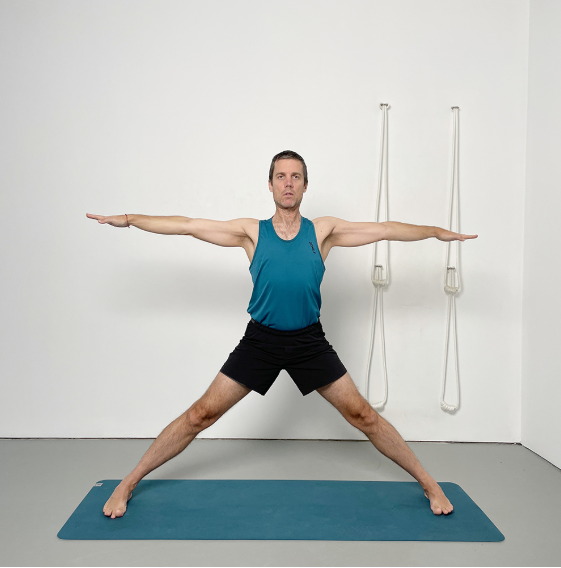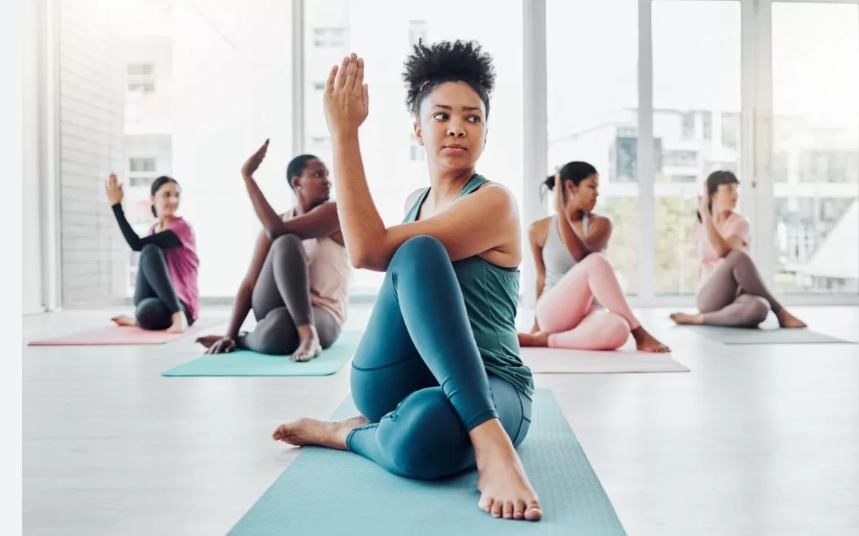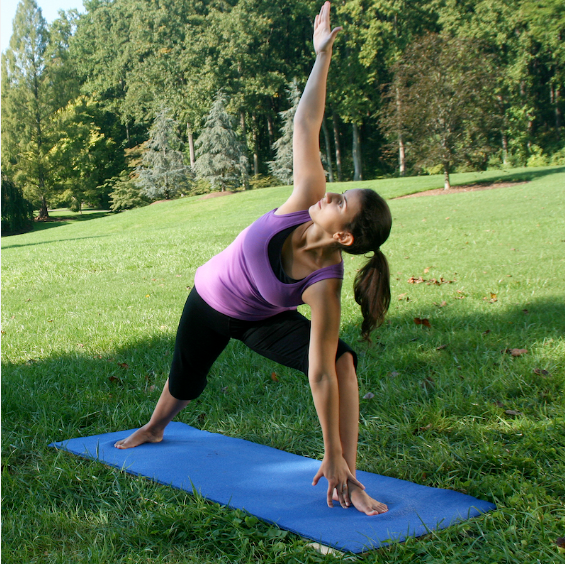
Yoga is an ancient practice that combines physical postures, breath control, and meditation to create harmony between the mind and body. If you're new to yoga, the practice can seem overwhelming, but it’s actually one of the most accessible forms of exercise for people of all fitness levels. In this guide, we’ll walk you through everything you need to know to start your yoga journey, including essential poses, tips for beginners, and how to make the most of your practice.

Physical Benefits: Yoga improves flexibility, strength, and balance. It also promotes cardiovascular health and supports injury prevention.
Mental Benefits: Yoga encourages relaxation, reduces stress, and fosters mental clarity and emotional balance.
Spiritual Benefits: For many, yoga is a spiritual practice that promotes inner peace, self-awareness, and connection to the present moment.

Hatha Yoga: A gentle, slow-paced style that focuses on basic postures and breathing exercises. It’s ideal for beginners looking to learn foundational poses and relaxation techniques.
Vinyasa Yoga: A more dynamic style that links breath with movement in a flowing sequence of poses. It’s great for those looking for a more athletic practice.
Yin Yoga: A slower practice that focuses on deep stretches and holding poses for longer periods. Yin yoga is excellent for improving flexibility and calming the mind.
Restorative Yoga: A gentle, relaxing practice that uses props like blankets and bolsters to support the body in restful poses. It’s perfect for stress relief and deep relaxation.
Ashtanga Yoga: A physically demanding style that follows a set sequence of postures. It’s ideal for those looking for structure and discipline in their practice.
Power Yoga: A vigorous, fitness-based approach to Vinyasa yoga that builds strength and stamina. It’s great for those who want an intense workout.

Mountain Pose (Tadasana): A foundational standing pose that improves posture and balance. Stand tall with your feet hip-width apart, arms by your sides, and shoulders relaxed.
Downward-Facing Dog (Adho Mukha Svanasana): A classic yoga pose that stretches the hamstrings, calves, and shoulders. Start on your hands and knees, then lift your hips toward the ceiling, forming an inverted V-shape with your body.
Child’s Pose (Balasana): A resting pose that gently stretches the lower back, hips, and thighs. Kneel on the floor, sit back on your heels, and stretch your arms forward, resting your forehead on the mat.
Warrior I (Virabhadrasana I): A strong standing pose that builds leg strength and opens the chest. Step one foot forward into a lunge, with your back foot angled out slightly. Raise your arms overhead and sink into the lunge.
Cat-Cow Pose (Marjaryasana-Bitilasana): A gentle flow between two poses that stretches the spine and warms up the body. Start on your hands and knees, arch your back up (Cat Pose), then lower your belly while lifting your chest (Cow Pose).
Tree Pose (Vrksasana): A balancing pose that improves focus and stability. Stand on one leg, and place the sole of the other foot against your inner thigh or calf. Raise your arms overhead and hold.
Seated Forward Bend (Paschimottanasana): A seated pose that stretches the hamstrings and lower back. Sit on the floor with your legs extended, then fold forward from your hips, reaching for your feet or shins.

Ujjayi Breath (Victorious Breath): This slow, controlled breath is often used in Vinyasa yoga. Inhale and exhale through your nose, slightly constricting the back of your throat to create a gentle “ocean” sound.
Three-Part Breath: A calming breath technique that encourages full, deep breathing. Inhale deeply into your abdomen, ribcage, and chest, then exhale fully in reverse order.
Alternate Nostril Breathing (Nadi Shodhana): A balancing breath technique that promotes calm and focus. Using your thumb and ring finger, alternate closing off one nostril while breathing in and out through the other.

Start Slowly: Begin with a gentle practice, especially if you’re new to yoga or exercise in general. Focus on learning the basic poses and developing good alignment before attempting more advanced poses.
Listen to Your Body: Yoga is a personal practice, and it’s important to listen to your body. If a pose feels uncomfortable or painful, modify it or come out of it. Never force yourself into a position that doesn’t feel right.
Practice Consistently: Consistency is key to progress in yoga. Try to practice a little bit every day, even if it’s just 10-15 minutes. Over time, you’ll build strength, flexibility, and confidence.
Use Props: Don’t be afraid to use props like blocks, straps, or blankets to help with alignment and make poses more accessible. Yoga props are a great way to modify poses and make them more comfortable.
Find a Teacher: If possible, attend a beginner’s yoga class or work with a certified yoga instructor. A teacher can guide you through the poses, help correct your alignment, and answer any questions you may have.

Choose a Quiet Spot: Find a space in your home where you won’t be disturbed. It doesn’t need to be large—just enough room for your mat and some extra space to move around.
Keep It Simple: Your yoga space doesn’t need to be elaborate. A clean, clutter-free area with your mat, a few props, and a calming atmosphere is all you need.
Set the Mood: Create a calming environment with soft lighting, candles, or soothing music. Adding elements like plants or aromatherapy can also enhance the ambiance of your space.

Start with Short Sessions: Begin with just 5-10 minutes of meditation at the end of your yoga practice. You can sit cross-legged or lie down in Savasana (Corpse Pose) and focus on your breath or a calming word or mantra.
Use Guided Meditation: If you’re new to meditation, try using a guided meditation app or recording to help you stay focused. Many yoga teachers include short guided meditations at the end of their classes.
Mindfulness: Yoga encourages mindfulness, which means being fully present in the moment. Whether you’re holding a pose, focusing on your breath, or meditating, mindfulness is the key to a deeper connection with your practice.
Final Thoughts
Starting yoga as a beginner can be an exciting and rewarding journey. By choosing the right style, focusing on foundational poses, and incorporating breathwork and meditation, you’ll begin to experience the many benefits yoga has to offer. Remember, yoga is a personal practice that grows with you, so be patient, stay consistent, and most importantly, enjoy the process.